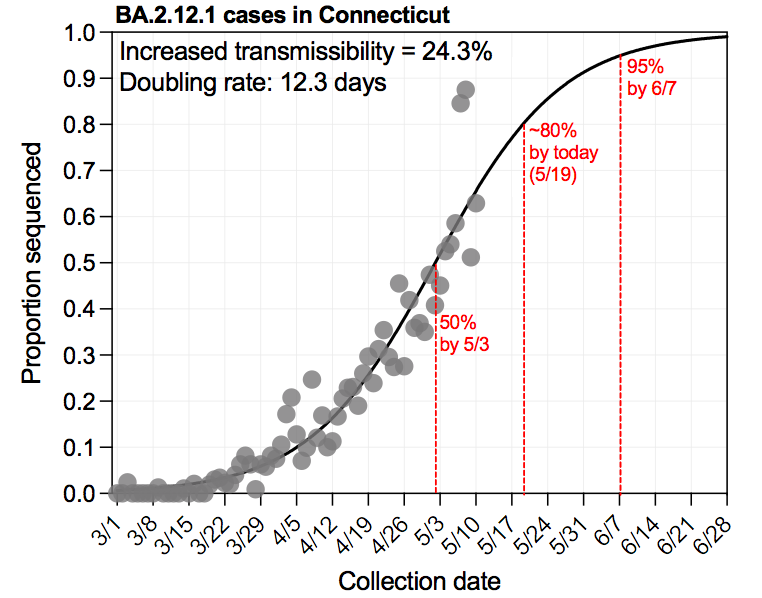🧬 5/20 Connecticut #SARSCoV2 variant surveillance
@CovidCT | @jacksonlab | @CTDPH | @YaleSPH | @YaleWestCampus | @YNHH
- 2nd case of B.1.617.2 in CT
- B.1.1.7 >75% of all cases, but..
- COVID-19 cases lowest since early October 🥳
short 🧵 | Report 👉
covidtrackerct.com/variant-survei…
@CovidCT | @jacksonlab | @CTDPH | @YaleSPH | @YaleWestCampus | @YNHH
- 2nd case of B.1.617.2 in CT
- B.1.1.7 >75% of all cases, but..
- COVID-19 cases lowest since early October 🥳
short 🧵 | Report 👉
covidtrackerct.com/variant-survei…

2/5 The second case of B.1.617.2 was from the same county as the first case (Fairfield), but they are unrelated (see tree 👇). Neither cases are known to be linked to international travel. 

3/5 B.1.1.7 is still 📈 frequency not because the lineage is rapidly expanding, but because it is dying out slower than the non-B.1.1.7 lineages. So the total number of B.1.1.7 cases 📉 by 87% since late March. 

4/5 The total COVID-19 cases in Connecticut are the lowest since early October. I just wanted to say that again 😀🍻 

5/5 This would have been possible without the expertise of @JosephFauver who established our sequencing and processing pipelines while we were all trying to put out various fires. I am so grateful for his efforts.
Here he is sequencing one of our first samples in March 2020.
Here he is sequencing one of our first samples in March 2020.

Bonus: Here is an article discussing some of the work that @JosephFauver led using genomic epidemiology to investigate SARS-CoV-2 transmission and evaluate COVID-19 protocols for sports leagues.
wsj.com/articles/decod…
wsj.com/articles/decod…
Double bonus: @JosephFauver recently received the 2021 Distinguished Service Award from his alma matter @PeruState for providing COVID-19 guidance to the College prepared for fall classes on campus. Well deserved 👏
peru.edu/news/2021/fauv…
peru.edu/news/2021/fauv…
• • •
Missing some Tweet in this thread? You can try to
force a refresh















